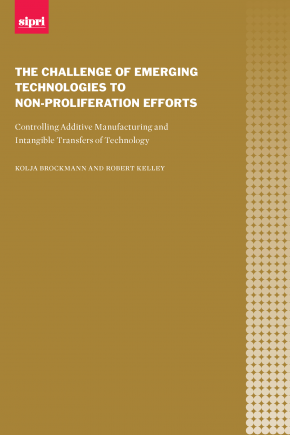The Challenge of Emerging Technologies to Non-proliferation Efforts: Controlling Additive Manufacturing and Intangible Transfers of Technology
Additive manufacturing (AM) machines are multipurpose manufacturing instruments that rely on the transfer of build-information in a digital form. AM is a rapidly developing technology with a growing range of applications, especially in the aerospace and defence industry. It is also generating concerns about its potential to create ways of weakening or circumventing dual-use and arms export controls. This SIPRI Paper examines (a) the state of the art in AM; (b) its ability to produce military equipment and dual-use items; (c) the application of export controls to AM and their implementation at the national level; and (d) the challenges that implementation and compliance present for governments, companies and research institutes. The conclusions summarize potential options and considerations when expanding controls on AM.
This is one of two research papers that address the closely related issues of controlling transfers of software and technology and applying exports controls to AM. Taken together, the papers examine some of the most challenging issues that governments, companies and research institutes in the European Union (EU) and the wider world are facing when they seek to effectively implement dual-use and arms export controls. The papers also address a range of topics that are under active discussion within the multilateral export control regimes and in connection with the recast of the EU Dual-use Regulation. For the second paper, 'The Challenge of Software and Technology Transfers to Non-proliferation Efforts: Implementing and Complying with Export Controls', see here.
Funding for the concept paper was provided by the US Department of State’s Export Control and Related Border Security (EXBS) Program.
1. Introduction
2. The state of the art in additive manufacturing
3. Key proliferation challenges linked to AM
4. Current and proposed future export controls on AM
5. National practices and key challenges in applying export controls to AM
6. Conclusions and recommendations


